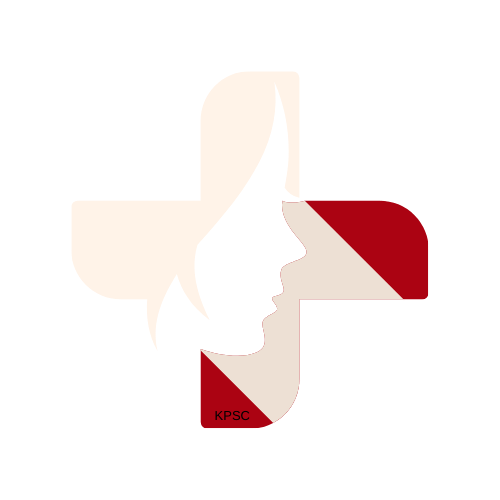Best Ethnic Rhinoplasty Clinics in Seoul | Cost & Guide
Restore your nose’s form, function, and confidence.
Ethnic rhinoplasty is a specialized procedure that involves reshaping the nose to enhance its appearance while preserving or emphasizing the unique ethnic features of the patient. Whether your concerns are aesthetic or functional, our expert team in Seoul is here to deliver natural-looking and long-lasting results.
Why Is Ethnic Rhinoplasty Performed?
- Refine the Nose Shape
Ethnic rhinoplasty can improve the size, shape, and symmetry of the nose while maintaining the features that reflect your cultural background. Whether you want to narrow a wide nose, define the nasal tip, or smooth a bumpy bridge, the surgery is customized to suit your aesthetic goals. - Improve Breathing Function
In addition to cosmetic improvements, ethnic rhinoplasty can also address functional issues such as a deviated septum or nasal obstructions, which can affect breathing. The procedure can restore nasal airflow while enhancing the appearance of the nose. - Balance Facial Features
A key goal of ethnic rhinoplasty is to create a harmonious balance between the nose and other facial features. The surgery is designed to enhance the overall appearance of the face without compromising your ethnic identity. - Increase Self-Confidence
Many patients who undergo ethnic rhinoplasty report a significant boost in their self-esteem, as they feel more comfortable with their facial appearance and enjoy a better sense of facial harmony.
Benefits of Ethnic Rhinoplasty
- Enhance Natural Beauty: Preserve the unique characteristics of your ethnic features while refining the shape of the nose for a more balanced look.
- Culturally Sensitive Approach: Ethnic rhinoplasty respects your cultural heritage and facial aesthetics while achieving subtle and natural-looking results.
- Improve Functionality: Correct breathing problems caused by structural issues like a deviated septum, nasal valve collapse, or enlarged turbinates.
- Boost Confidence: Many patients feel more confident and comfortable with their appearance after undergoing ethnic rhinoplasty.
- Customizable Results: The procedure can be tailored to suit your individual needs, whether it involves narrowing the nostrils, lifting the tip, or reshaping the bridge.
What to Expect During the Procedure
Ethnic rhinoplasty is typically performed under general anesthesia to ensure comfort and safety throughout the procedure. The surgery generally lasts between 1.5 to 3 hours, depending on the complexity of the changes needed.
Key Steps of the Ethnic Rhinoplasty Procedure:
- Consultation & Planning
During your consultation, the surgeon will discuss your goals for the surgery, review your facial anatomy, and understand your cultural and aesthetic preferences. They will then develop a personalized treatment plan that aligns with your desired results. - Incision Placement
Ethnic rhinoplasty can be performed using either open rhinoplasty or closed rhinoplasty techniques, depending on the extent of the surgery. - Open Rhinoplasty: An incision is made across the columella (the small tissue between the nostrils), providing greater access for reshaping the nose.
- Closed Rhinoplasty: All incisions are made inside the nostrils, leaving no visible scars. This method is typically used for less complex procedures.
- Reshaping the Nose
The surgeon will adjust the bone and cartilage of the nose to achieve the desired shape. This may involve removing or sculpting cartilage, grafting cartilage from other parts of the body (e.g., ear or rib cartilage), or reshaping the nasal bone to create a smoother profile. - Closure & Dressing
Once the desired results are achieved, the incisions are closed with fine sutures, and a splint or bandage is applied to help support the new shape of the nose during the healing phase.
Ethnic rhinoplasty is typically performed on an outpatient basis, allowing patients to go home the same day after surgery.
Recovery & Aftercare
The recovery process for ethnic rhinoplasty is similar to traditional rhinoplasty, although recovery times may vary depending on the individual and the complexity of the surgery.
- Recovery Time: Most patients can return to light activities within 1 to 2 weeks. Avoid strenuous physical activities and exercise for 4 to 6 weeks to allow proper healing.
- Swelling and Bruising: Swelling and bruising, especially around the nose and eyes, are common but typically subside within 2 to 3 weeks.
- Nasal Splint or Bandages: A nasal splint or bandage may be applied to support the new shape of the nose for the first few days to weeks after surgery.
- Follow-up Appointments: Follow-up visits are necessary to monitor the healing process, remove any sutures (if needed), and check the progress of the results.
- Final Results: The final results of ethnic rhinoplasty will be visible within 6 to 12 months as the swelling fully resolves and the nose settles into its new shape.
By following post-operative care instructions and attending follow-up visits, you can ensure the best possible outcome.
Cost of Ethnic Rhinoplasty in Korea
The cost of ethnic rhinoplasty in Korea can vary depending on factors such as the complexity of the procedure, the surgeon’s experience, and the clinic’s location. On average, the cost for ethnic rhinoplasty in Korea ranges from:
- Ethnic Rhinoplasty: ₩4,000,000 – ₩8,000,000 KRW (Approx. $3,200 – $6,400 USD)
- Consultation Fee: ₩50,000 – ₩100,000 KRW (Approx. $40 – $80 USD)
- Post-Surgery Care & Follow-up: Additional costs may apply depending on follow-up care, medications, and post-surgical garments.
It’s essential to consult with a qualified surgeon to receive an accurate estimate based on your individual needs.
Schedule Your Consultation
If you're considering ethnic rhinoplasty in Seoul, our experienced surgeons are here to guide you every step of the way. Schedule a consultation today and discover how expert ethnic rhinoplasty can enhance your natural features with sensitivity and confidence.
Transform Your Confidence
Experience personalized care and exceptional results with our board-certified plastic surgeons.
Contact Us
We will get back to you as soon as possible.
Please try again later.

